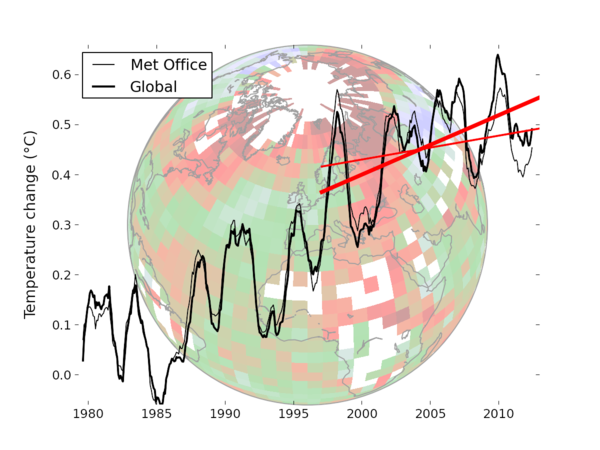Contents
63-953 Climate and Satellite Data Analysis
Lars Kaleschke, Alexander Loew
MS Integrated Climate System Sciences
Date: 3.2.2014-7.2.2014
Place: Geom 1536c
Course objectives
The participants will learn to practically work with climate model, reanalysis, in-situ station and satellite data. Organized as a group project, the participants will further learn the principles of project management and shared software development.
Schedule
Monday, 10:00
General Introduction
Group work: develop a project plan and write a short technical proposal for your project.
Final report due by 15. March 2014
Obtain data and do preliminary analysis (e.g. data coverage).
Tuesday
Morning: Group presentations of project plan and preliminary analysis.
Afternoon: implementation and project work
Wednesday
Morning: Group presentations of methods and code implementations
Afternoon: Project work
Thursday
Morning: Group presentations of preliminary results
Afternoon: Project work
Friday
Morning: final presenation of results and discussion
Afternoon: evaluation and preparation of final report
Topics for group work
The major topic of this course will deal with data gaps in climate and satellite records and their implications for the calculation of global statistics. The overall objectives of the course are:
- raise awareness on the problem with data gaps in climate records
- learn about methods for coping with data gaps
- assess the effect of data gaps on statistics of climate related datasets
- learn processing of data using a variety of methods
Another major objective of this course is to train the so called soft-skills in practice, like
- project management (planning ... final report)
- joint code development
- reporting
Has the Earth stopped warming?
Coverage bias in the HadCRUT4 temperature series and its impact on recent temperature trends

Kevin Cowtan and Robert Way published a paper which was quite controverily discussed in the scientific community. They fill gaps of the HadCRUT temperature data set by using satellite data. By filleing this (well known) Arctic gap and compare their new reconstruction of surface temperature data to independent in-situ observations and reanalysis data they show that the global mean temperature hiatus is not observable any more.
Cowtan and Way (2013) methods and data are freely available and we will use them in the course:
In situ measurements of surface temperatures are available from the International Arctic Buoy Programme (IABP) website:
Project A: Cowtan and Way (CW2013) reconstruction
- Review methods of Cowtan and Way (2013) and give a summary of their approach
- Analyse their reconstructed dataset of surface air temperature in terms of different parameters (global mean and stdv, seasonal cycle, anomalies, trends etc.)
- is the dataset homogeneous in time or can you observe temporal inconsistencies?
- how robust are trends estimated from this data record? What is the role of the length of the timeperiod?
- do the same analysis for the original HadCRU temperature dataset (and possibly also for other datasets, like reanalysis (cross-check with Project C !))
- are results different? are they significantly different?
- Look at correlations with climate indices, e.g. ENSO, NAO, PDO
- Present all results in proper form (maps, statistics ...)
Project B: Variations in Surface Air Temperature Observations in the Arctic
- Review methods of Rigor et al. (2000)
- Analyse the surface air temperature measured by the drift buoys (seasonal cycle, anomalies, trends etc.)
- Are there significant trends over different period of times?
Project C: Data intercomparison
Use the buoy measurements of surface air temperature as ground truth
- Write code to interpolate the different datasets in a common grid
- Compare CW2013, buoy and reanalysis data
- Was the data gap in the Arctic filled in reasonably?
- Are there biases or jumps in the data?
Project D: HOAPS ocean flux sampling bias
HOAPS climatology of ocean surface fluxes
- HOAPS is sampled twice a day
- What is the impact of undersampling the dirnal cycle on monthly means?
- What is the impact of sea ice gaps on monthly means?
- How do HOAPS surface flux estimates compare to literature values of global mean ocean surface fluxes?
- What is the impact of different land/sea masks and spatial grids (resolution, projections) on total mean global fluxes?
TODOs
Data
CW2013

ERA-Interim

NCEP

Bouy data

HOAPS data

Final report
Template structure:
- Abstract
- Introduction: state of the art (literature), statement of the problem
- Methods and data
- Results
- Discussion
- Conlcusion
References
- Python Scripting for Computational Science, Hans Petter Langtangen, Springer (available in the ZMAW library)
Examples from the past
